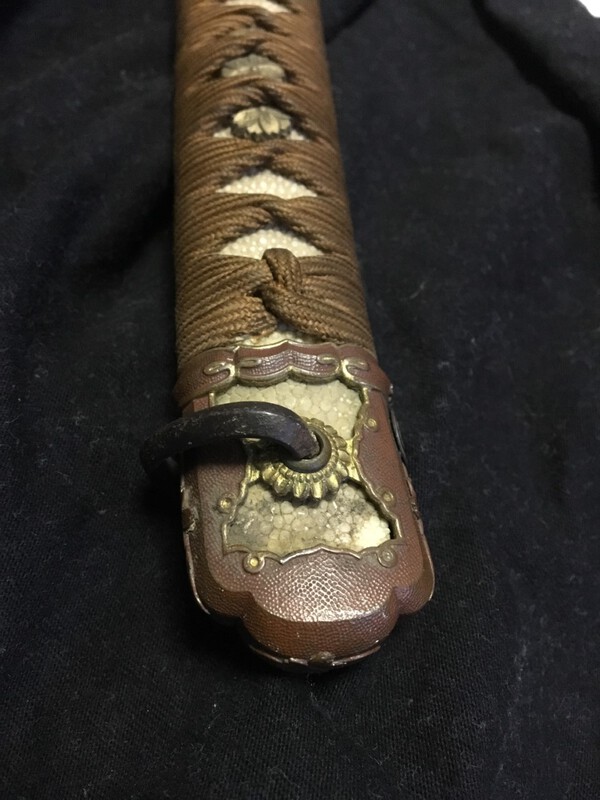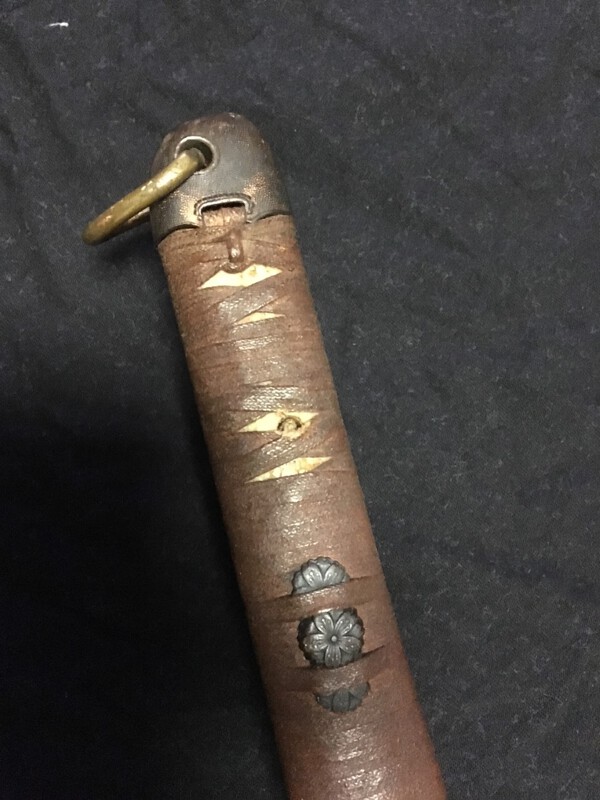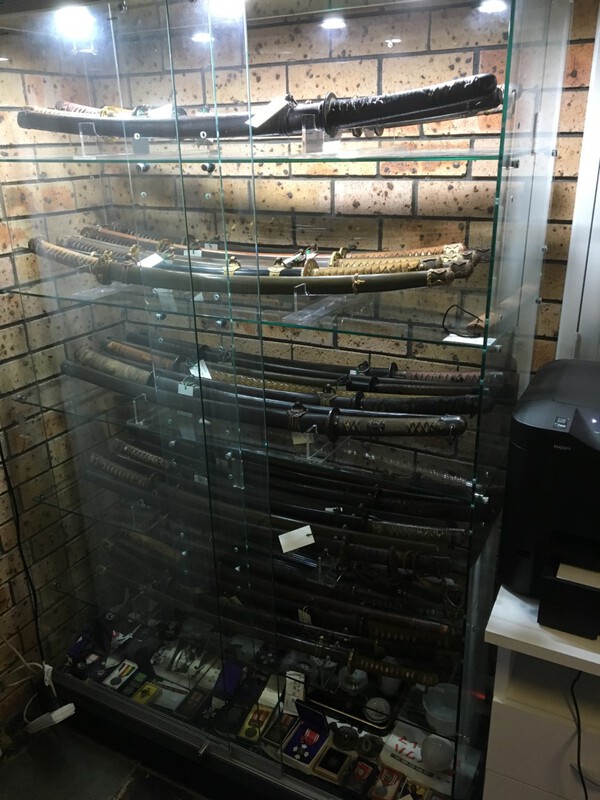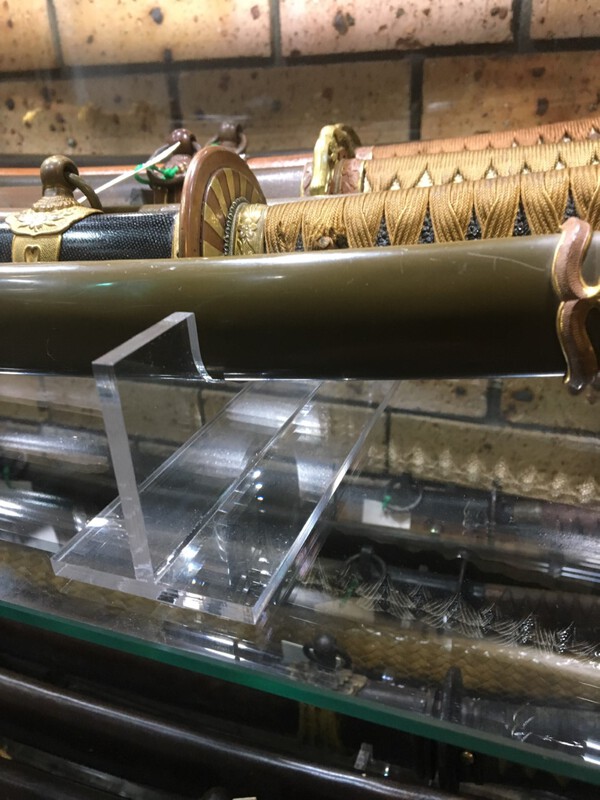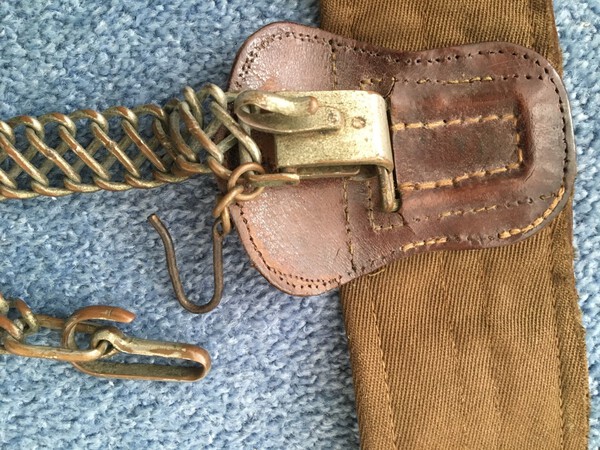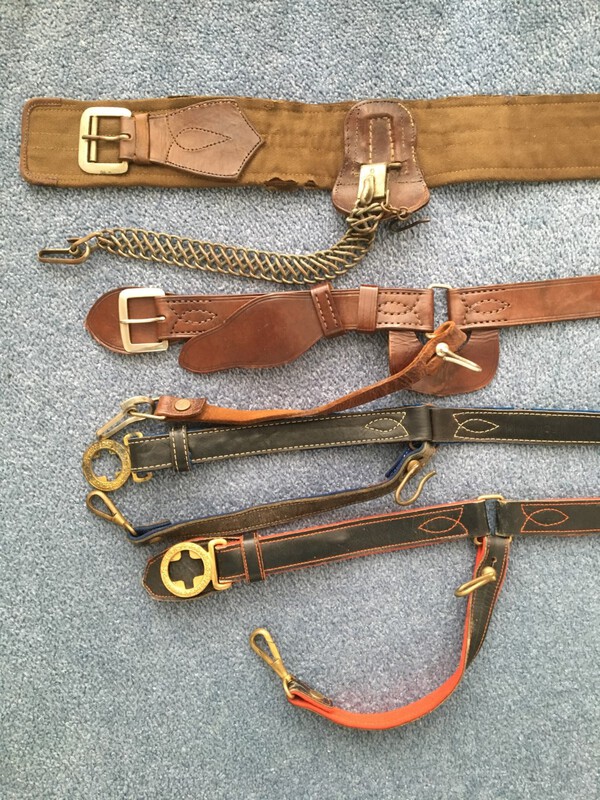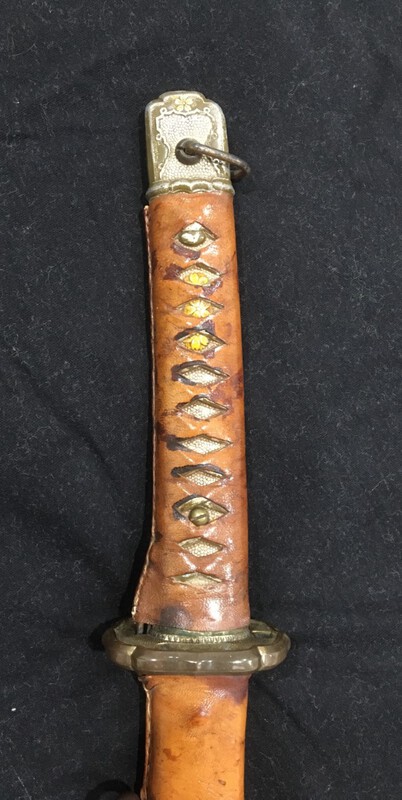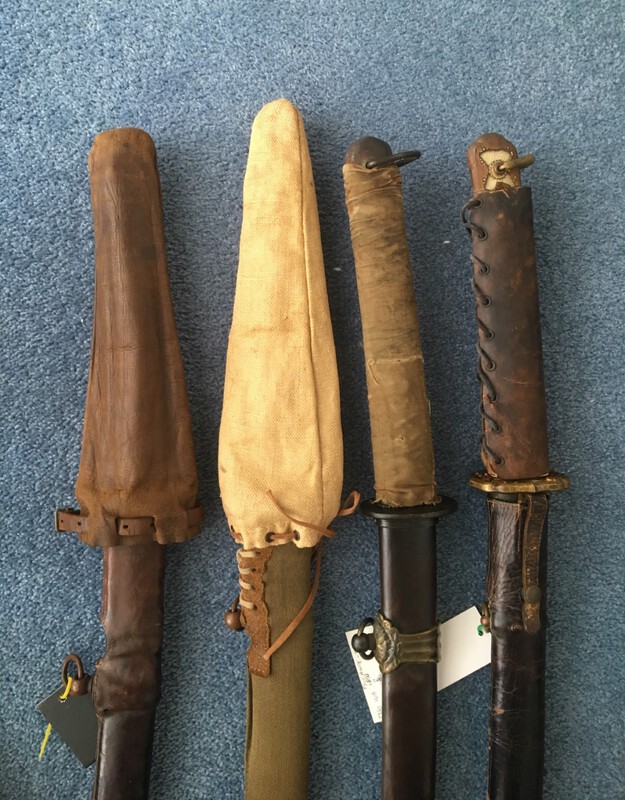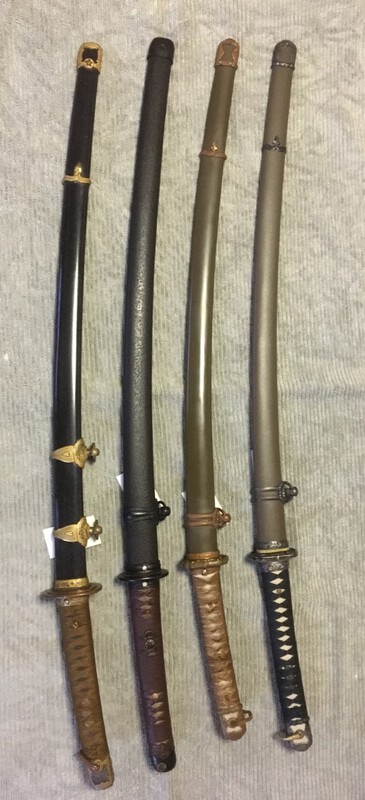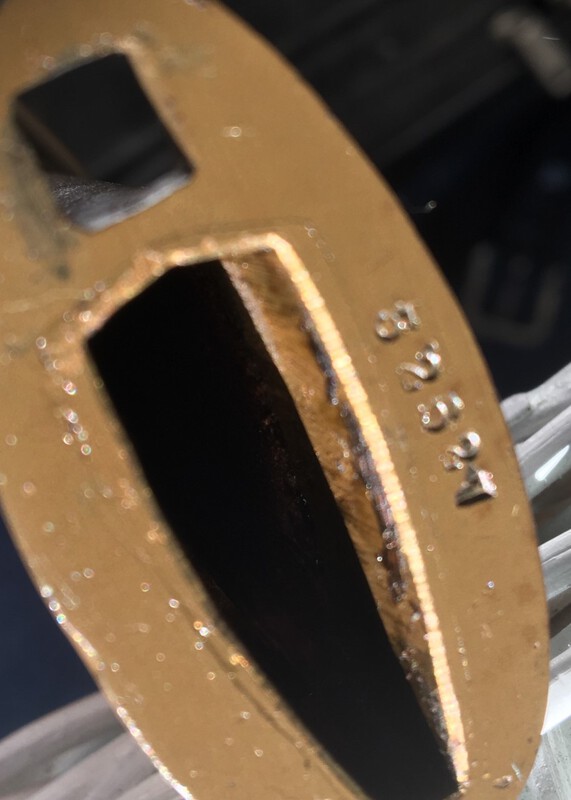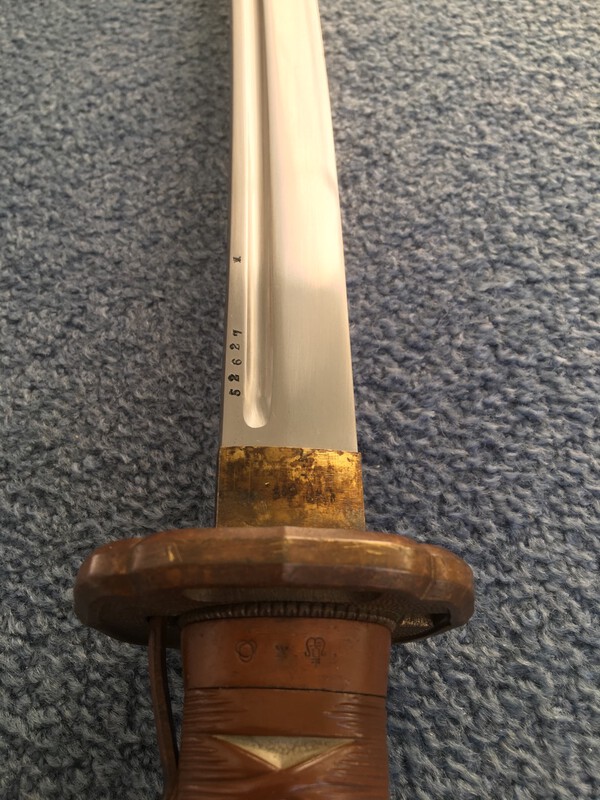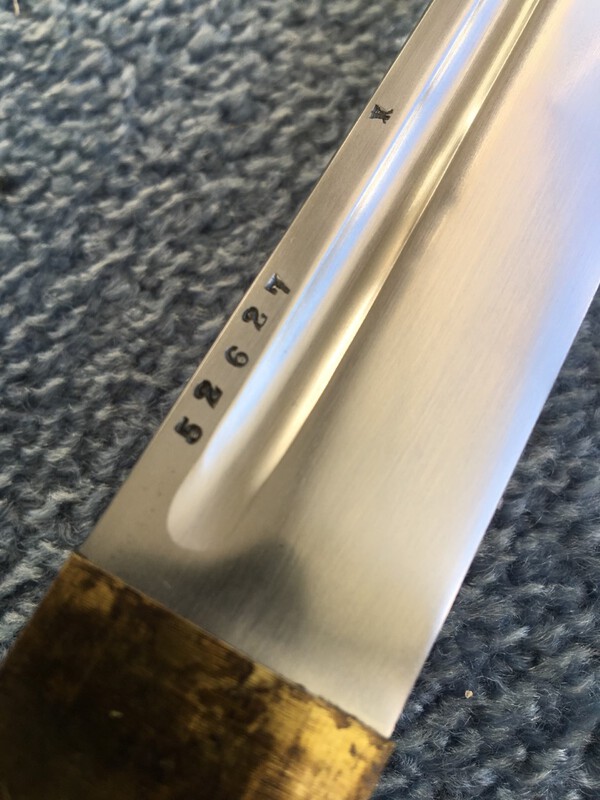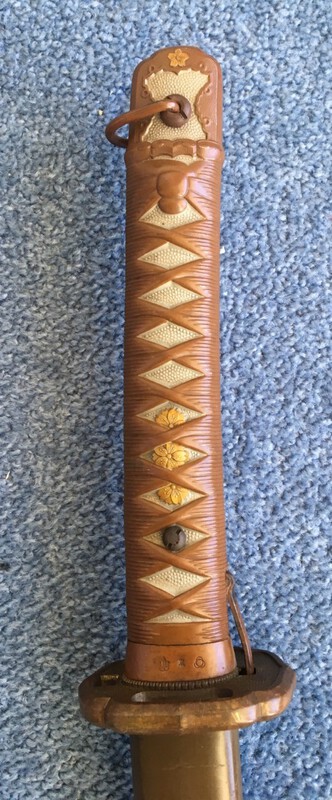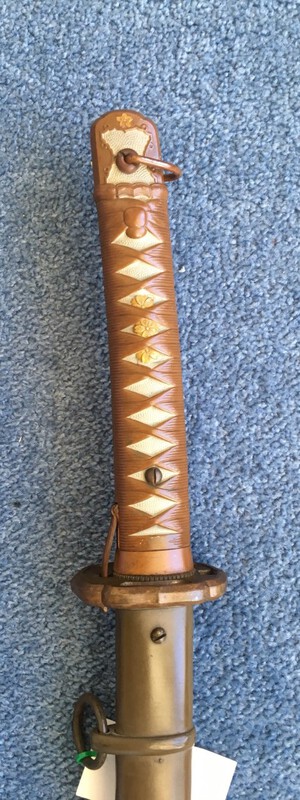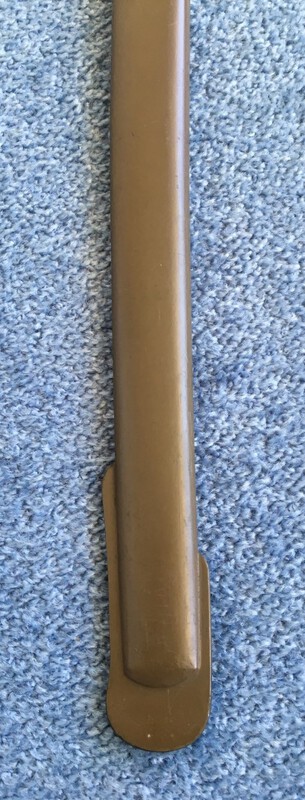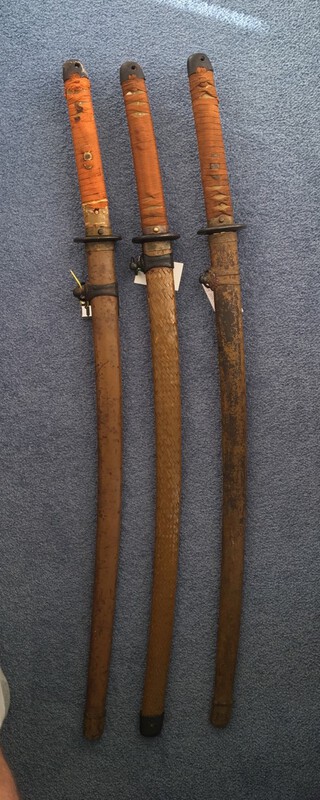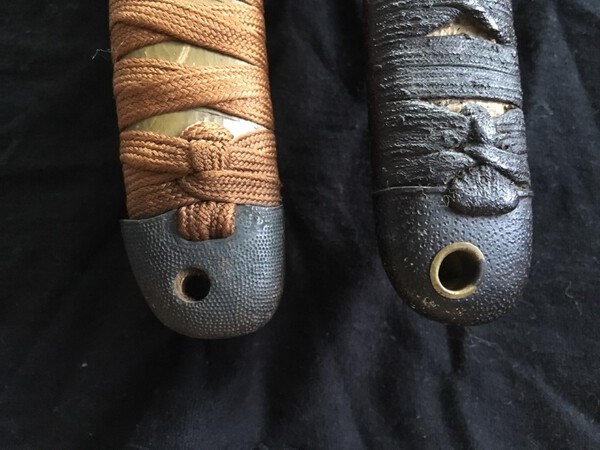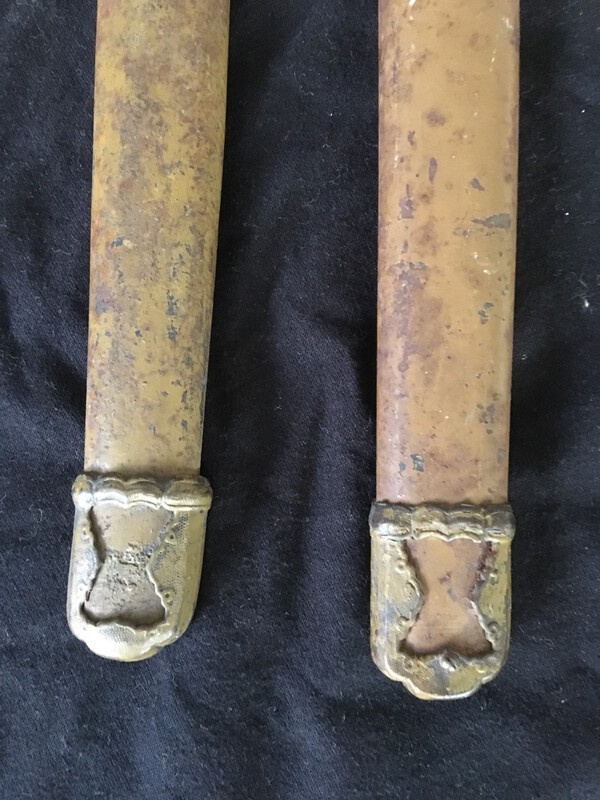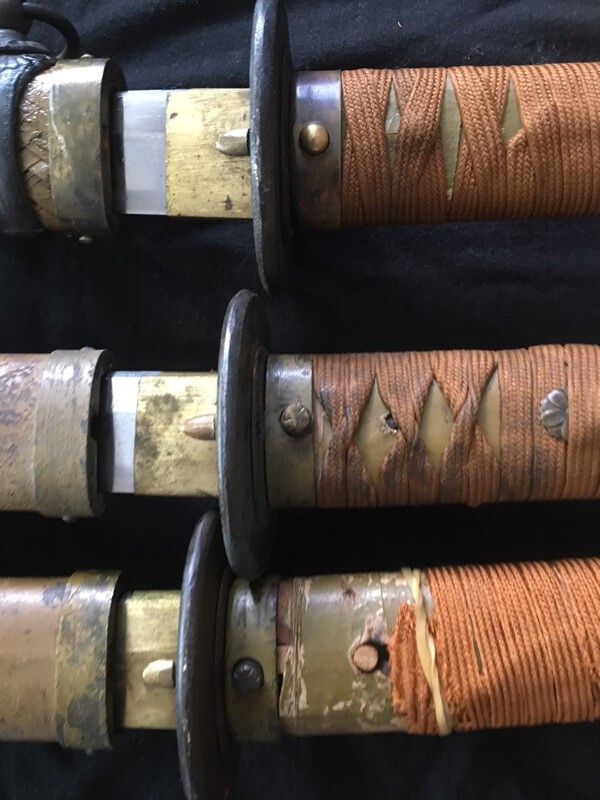-
Posts
1,905 -
Joined
-
Last visited
-
Days Won
85
Everything posted by IJASWORDS
-
-
-
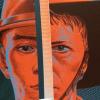
Display Case-Advice Appreciated
IJASWORDS replied to Cameron's topic in General Nihonto Related Discussion
Hi Cameron, I picked up some glass, shop display cases, each holds upto 45-50 swords. I got a sign factory to make some perspex stands to my design. Try a shop-fitting company. These have LED lights, and room on the base for other stuff. -
I am interested in understanding how the double hanger sword was suspended from the sword belt. Did they have two straps and a hook? Pictured are some of my belts. The all leather is an NCO, the canvas belt has one chain link hanger, but two additional hooks at the top. Any thoughts or photos would be appreciated.
-
True Bruce, I am not doubting this guy, glad he has come here to learn. Just making a general comment on provenance.
-
Bruce, the issue of provenance is a very touchy subject. The word of a seller, grand dad/uncle/father is not necessarily reliable provenance. I would never trust it unless backed up by original documentation, such as the permission slip signed by an officer to bring back a wartime souvenir. So to me, word of mouth provenance means little or nothing (certainly where value is concerned). That said, there would certainly be sentimental value to the family of the soldier. I am not making any judgement on this sword, just a general comment.
-
I agree with Brian, I was being polite by not commenting that the fittings are not a matched set. And the blade has been modified to fit a Gunto outfit.
-

Seki-to with Hozon certification
IJASWORDS replied to hillman's topic in Auctions and Online Sales or Sellers
Not even an original koshirae. Rewrapped ito, tsuba and seppas wrong for a non existent locking mechanism, and a tsuba filed down to fit. -
-
Often in WW2 photos of officers with their sword, the handles are covered in protective linen, leather or canvas covers. Some wrapped, some sewn, some lace up, some buckled up. They had not endured well over the years, so today they are not that common. Pictured a few from my collection that have survived.
-
Ed, nice blade, original koshirae, great green color saya..... all in all a great collectible early made gunto.
-
The Japanese meanings...... Gunto, any sword in military mounts. Gendaito, "modern sword" 1876-1945. Showato, any sword made in the Showa period, 1926-1989, in the time of Hirohito.
-
Now the terminology is settled, lets recognize Gunto for what they are.... important swords (blades and koshirae) in Japanese sword history. Whether they lost the war or not, or some one came up with the term "art swords" to differentiate traditionally made blades or not, they need to be preserved, appreciated and recognized, not just as militaria or weapons, but as an historically important period in sword making lineage.
-
-
I appreciate all the comments, and time may heal all wounds, where they will be formally recognized for what they are. And, as fakes grow in number and quality, some kind of system to confirm originality.
-
David, I think most of us here on Military Swords Of Japan know and understand the features of traditionally made Nihonto. And Nihonto translates to Japanese Sword. If you read my post I said "afforded recognition", I did in no way say equal status to traditionally made swords. There are many ways of affording recognition without diluting the status of traditionally made blades. Whether it is a traditional Samurai weapon, or a Showa WW2 weapon, it is still a Japanese made..... weapon. Recognition can be achieved in many ways. Recognition by the Japanese themselves may go along way to them accepting that WW2 made Gunto are just another period of their sword making history. The Gunto (you call it militaria) was the last sword to be used as a functional weapon, in history. The Japanese have a long proud history of using swords in war. The Gunto should not be denied their place in Japanese sword history. I am very passionate about this subject, as I feel the spirit of the Japanese soldier every time I pick up a Gunto. And, as I said previously, I am equally sure the Japanese soldier also felt the spirit, traditionally made or not.
-
Save up maybe $1250, and you could buy some thing that is half decent. You will regret a cheap sword at $750.
-
This is an interesting development. I have papered Emura and Nagamitsu (no stamps, and no star stamp). At the end of the day, showato are Japanese swords, made at a time in history, for the same purpose as ancient samurai swords, weapons.... only their mode of manufacture or material may differ. A WW2 officer who surrendered his showato sword, felt just as devastated as he would if it was an old nihonto. I have felt for a long time that WW2 swords should also be afforded recognition.
-

Excellent Experience with Yakiba Sales
IJASWORDS replied to ChrisW's topic in Auctions and Online Sales or Sellers
I echo the compliments on Ed, easy to do business with. -
More photos attached. Nice try Stegel, the blade is as "brand new" condition as you would expect. Ok the brass fittings show 77 years of patina. There has never been any polishing or restoration. The blade is very sharp, undamaged.
-
-
Hey Trystan, photos attached. The points of similarity that interest me are.... 1. Of course the 1944 Kanemasa blades. 2. All the tzuka fittings, including the olive green tape "same", the orange ito colour and style, the rinji style kabutogane, and the plain pressed brass fuchi and kuchigane. 3. There are variations in the saya fittings to some extent, where you wonder if the manufacturer was using the pieces he had available.
-
Thanks Steve, firstly I have only used the type3 nomenclature as that is what most use, I would normally use the Rinji name. To my eye this looks like an "economy" grade outfit, fitted with a low spec Showa blade. It would be interesting to find if Katsumasa had a supply arrangement with the koshirae maker. Yes, would love to see other examples.
-
Finding one is a fluke, finding a second is a coincidence, finding three is a trend. Photos are attached of three genuine late war WW2 swords, that have attributes of the 98 and type3, BUT ALSO unique parts common to all three. 1. The handle wrap pattern and material is the same in all three . Under the wrap is a "drab olive" painted tape. 2. The kabutogane is similar but not the same as a type3. The hole for the sarute is much smaller, see the comparison photo with type3. 3. The fuchi and kuchigane are painted, plain pressed brass. 4. The saya and ishizuke are drab olive painted, with no decoration. 5. The blades are Katsumasa made from May to December 1944. (Coincidence?). 6. One mekugi-ana. In all cases the quality is poor, they look rushed, with only one coat of paint, and nothing to prevent corrosion. What are your thoughts on this truant? Are there any others out there?
-
Looks good!


